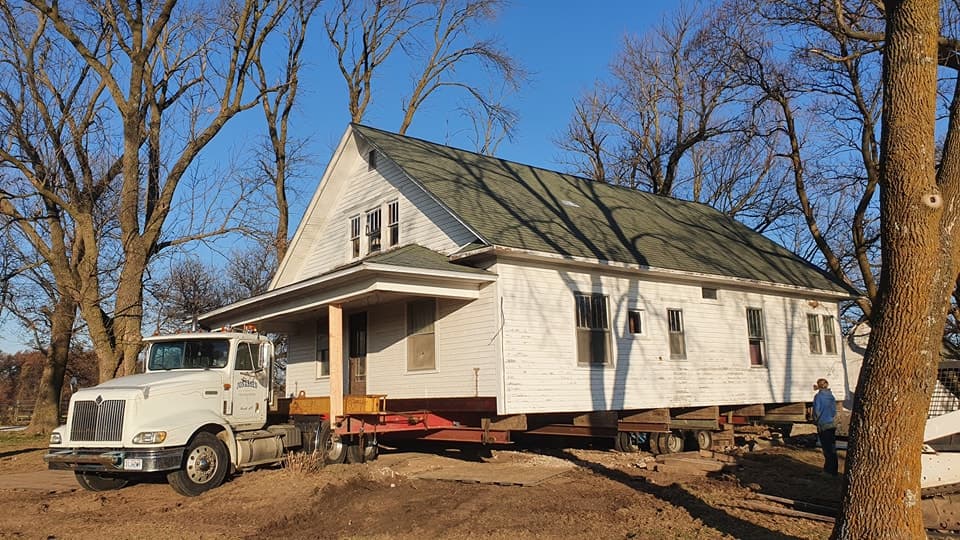Building moving projects are intriguing feats of engineering and logistics, requiring unique skills and knowledge. The prospect of relocating an entire structure, whether for preservation, development, or other purposes, presents a fascinating challenge. However, these projects also come with substantial costs that necessitate careful consideration.
In this blog, we will explore the various factors that influence the cost of building moving projects and highlight their importance. Understanding these factors is crucial for anyone contemplating a building relocation, as it can help plan, budget, and avoid unexpected expenses.
Building Size and Complexity
One of the most fundamental determinants of the cost of a building moving project is the size of the structure. Smaller buildings are generally easier and less expensive to move than larger ones. The complexity of the structure also plays a role. A simple, single-story house will be more straightforward to carry than a multi-story commercial building with intricate architectural details.
Moreover, larger buildings often require more labor, equipment, and time to prepare for the move, increasing costs. Understanding the size and complexity of your building is essential to estimate the potential expenses accurately.
Distance and Destination
The distance the building needs to be relocated is a significant cost factor. Moving a building across town is usually less expensive than transporting it cross-country. The longer the distance, the more resources, including fuel and labor, will be required to relocate.
Additionally, the final destination of the building matters. Suppose the building is being moved to a location with specific site requirements, such as a remote area or a densely populated urban setting. In that case, additional costs may be incurred to adapt the building to the new site.
Foundation and Site Preparation
Before moving a home, the current foundation and site conditions must be thoroughly assessed. If the foundation is in poor condition or unsuitable for the move, it may need to be repaired or replaced, adding to the project's overall cost. Moreover, site preparation may involve removing obstacles, utility lines, or trees that obstruct the path of the building.
Understanding the state of the foundation and the site's condition is vital, as it can significantly impact the project's cost. Failing to address these issues adequately can lead to costly delays and complications.
Regulatory Hurdles
The process of moving a building is subject to a complex web of permits and zoning regulations, which vary by location. Navigating this regulatory landscape can take time and effort. It often requires engaging with local authorities and obtaining the necessary permits, including road permits, zoning variances, and environmental clearances.
Please understand and comply with these regulations to avoid project delays and fines, increasing the overall cost. It is essential to factor in these permit and regulatory expenses when budgeting for a building moving project.
Transportation Methods

The method used to transport the building also affects the cost. There are primarily two options: trailer transport and hydraulic dollies. Trailer transport involves loading the building onto a trailer and moving it on wheels. Hydraulic dollies, on the other hand, use a system of jacks and wheels to lift and move the building.
Hydraulic dollies are often more expensive but can easily navigate challenging terrains and tight spaces. The choice of transportation method depends on the building's size, destination, and the terrain it must cross. Making the right decision here is crucial to controlling costs and ensuring a successful move.
Structural Modifications
Buildings must often undergo structural modifications to prepare them for the move. This may involve reinforcing the foundation, bracing walls, and removing non-structural elements. These modifications are costly but essential to ensure the building's integrity during the move.
Additionally, post-move alterations may be necessary to connect utilities, repair any damage incurred during the move, and adapt the building to its new location. Failing to account for these structural modifications and post-move costs can lead to budget overruns.
Labor and Equipment Expenses
The labor and equipment required for a building moving project are significant cost drivers. Skilled labor is essential for the disassembly, relocation, and reassembly. The labor cost can vary depending on the building’s location and the workforce's expertise.
Furthermore, specialized equipment such as cranes, trucks, and lifting gear is necessary for the successful execution of the project. Renting or purchasing this equipment can be a substantial expense. Acquiring cost estimates for both labor and equipment is essential to prevent financial surprises.
Unexpected Challenges and Contingencies
No building moving project is without its unexpected challenges. Unforeseen issues, such as adverse weather conditions, structural weaknesses, or logistical complications, can arise anytime. To mitigate the impact of these challenges on the project's cost, it's crucial to build a contingency fund into the budget.
The contingency fund provides a financial buffer to address unexpected expenses and delays. Setting aside a percentage of the overall budget is advisable to ensure that the project remains on track, even when unforeseen challenges emerge.
Jonassen Structural Movers as Your Moving Company
Understanding the key cost factors in building moving projects is essential for proper planning and budgeting. From the size and complexity of the building to the distance it needs to be moved, the condition of the foundation, and the regulatory hurdles to be navigated, each factor contributes to the overall cost. Choosing the right transportation method, addressing structural modifications, and accurately estimating labor and equipment expenses are critical for a successful project.
Always be prepared for unexpected challenges by building a contingency fund into the budget. By comprehensively considering these cost factors, you can confidently embark on your structural moving project, knowing that you are prepared for the complexities and potential expenses that may arise along the way.
Jonassen Structural Movers has the knowledge and technology to lift and transport various structures and machines securely. Although most of our clients want structural relocation services, we can transfer things of any age, size, or weight. Contact us today!

